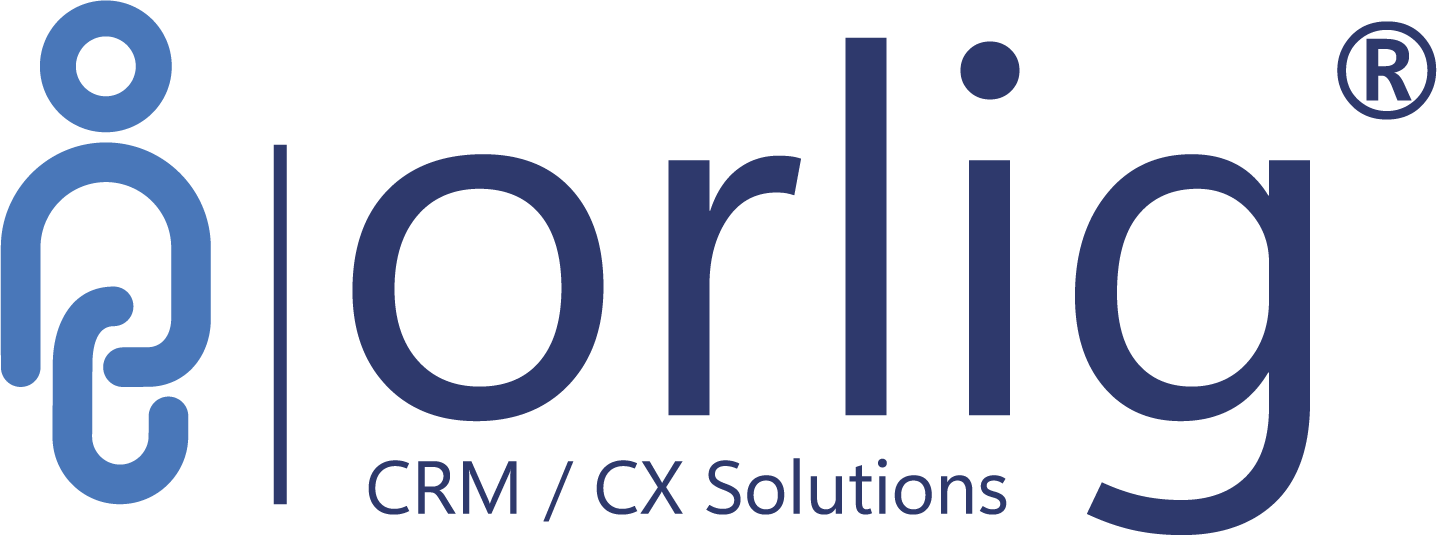Most durable, future-proof
CX platform in the market
Our focus on Customer Experience means that our range of easy-to-use products are built to find opportunities for real connections and create meaningful interactions all along the customer journey – from awareness to purchase, and beyond. With ORLIG CRM you can:
Have 360⁰ perspective
Get more insights and data to track leads, streamline processes, realign resources and delight customers.
Maximise Customer
Lifetime Value
Respond promptly to feedback, offer personalised services and seize opportunities to up-sell or cross-sell.
Own your
customer journey
Have control over multiple touchpoints, all via a thoughtfully intuitive, highly customisable dashboard.
How can we help you today?

ORLIG Customer Service
Give your frontliners the power to act and react quickly with actionable data for effective customer engagement.
ORLIG Sales Management
Empower your sales teams with access and insights to their accounts from anywhere at any time, so that they can make better decisions.


ORLIG Marketing Management
Design omnichannel marketing campaigns and empower your marketing teams with the supernatural ability to make proactive choices and winning decisions.
ORLIG IT Service Management
Breakthrough IT solutions will give you greater control and visibility to quickly resolve downtimes, manage chaos and deliver awesome customer service.


ORLIG Gamification
When you love what you do, you’ll perform at your best. ‘Purposeful Play at Work’ brings fun, competitiveness and motivation to the work environment.
Join 30,000+ users who work smarter, better and faster with ORLIG CRM

Frequently Asked Questions
Customer relationship management, or CRM, is a tech-driven process of incorporating data and metrics to improve relationship with customers to generate more sales. CRM makes it possible to attend to customers on a personal level, hence creating trust and loyalty.
It gathers and organises customer data such as contact details, past interactions and sales records. Insights are generated upon analysing this information, and processes are then automated to ensure that customer’s needs and expectations are met.
It increases sales by stretching the potential of business processes, communication capabilities and even the quality of goods and services offered.
By offering a complete view of the sales pipeline, CRM can empower your teams with data, reports and forecasts. It can effectively track and identify useful metrics on customer behaviour, giving you the advantage to make more informed decisions.
With additional functions such as sales and marketing automation, you can also be more prudent with time and financial resources. Not surprisingly, CRM is widely regarded as the best tech asset companies can invest in.
The sales and marketing teams will benefit from a set of tools to manage the entire sales and marketing funnel, all the way from lead qualification to closure. They can also develop personalised ad campaigns that appeal to specific target groups and build a positive experience around the brand.
Meanwhile, the customer service teams can easily manage customer requests and automate service functions according to pre-set processes, to deliver excellent customer service.
With a CRM system in place, you can:
- Generate more sales and maximise opportunities by nurturing leads that are likely to convert to sales.
- Retain customers and build loyalty by understanding your customer’s needs. This can be done easily by keeping track of interactions, complaints, feedback, buying behaviour and more.
- Grow your business via repeat purchases and recommendations, since satisfied customers are 5 times more likely to buy again and 4 times more likely to tell a friend.
- Collaborate easily between teams across your organisation, since you can all be on the same page, with access to data, updates and alerts.
- Automate monotonous, routine business processes to reduce operational costs and have more time to delight customers.
- Make changes to your product and packaging based on valuable feedback from loyal customers.
- Create a culture of accountability, responsibility and competitiveness among employees, via a common platform that encourages performance.
A CRM system is designed to improve customer service operations, marketing effectiveness and sales. Enterprise Resource Planning (ERP), on the other hand, manages other essential operations within the organisation, such as human resources, logistics and finance. Often, you’ll find ERP solutions with CRM systems. Yet, these may only include customer database management or minor sales functions and not comprehensive solutions.
Ask yourself: what are your goals? The system you choose should support corporate goals and fit the requirements of your industry, your customers, size of your business and budgets. Keep this checklist handy:
- Commit to a system that’s easy to use. Do not be swayed by ‘advanced’ features that you may never utilise. Choose instead to focus on a system that you and your team can get comfortable with.
- Customisable systems are good as you may need to create a hybrid system that fits your specific requirements.
- Your business will grow, so ensure that scalability and future adjustability are factored in.
- It’s a mobile-first world, so ensure that your CRM offers the capability to access, share and work on data from anywhere.
- Strong support channels and assistance when you need it.
Besides the benefits above, ORLIG comes ready with a robust range of products that deliver lead tracking and sales functions, marketing, integration with social media and a unique gamification feature.
In any CRM system, you’re likely to find these common features: Customer Database, Lead Management and Sales Tracking, Customer Service Management as well as Marketing Management.
More advanced systems will likely include Analytics, Customer 360-degree view via a smart dashboard, Customer Journey Insights, Workflow Automation and Process Validation.
ORLIG goes a step further with gamification to drive behavioural change, make routine processes more engaging and make a real difference in work performance.
Of course, and it can be a compelling tool to organise data, track leads, generate more sales and improve work productivity. The automated marketing function, for example, can also be helpful in creating a big impact without incurring significant media investment.
Do check out ORLIG BIZ, our latest offering and the only CRM platform of its kind designed for microentrepreneurs!
There are two methods for importing contacts into ORLIG: by uploading an Excel file or simply connecting to another database.
Yes, ORLIG CRM comes with a report writer feature to allow you to enhance your own report using a simple interface.
Yes, the system allows you to export your report to Microsoft Excel.
It does, and it comes with a simple, customisable workflow configurator to allow users to introduce changes to the workflow as and when needed.
ORLIG is a robust platform with a ready Application Program Interface to support multiple types of integration with external systems. Some of the common integration methods that we support are Web Services, Web API (JSON/XML), Database middleware, CSV/Text File, TCP/IP, Toolkits as well as custom integrations.
Here are some basic precautions to take:
- Conduct a complete security health check of your system to spot and repair vulnerabilities before a complete CRM deployment. The specialist conducting the deployment will be able to do this for you
- Decide who gets access to a specific information stored in the CRM. Some records, such as human resource data, may require restrictions while marketing information may be accessible to all using the system
- This is a simple one: ensure that users create complex passwords and make it a habit to change them every 6 months or even sooner
- Conduct timely audits on security regulations
Yes, it can, and it’ll make a big difference to marketing campaigns. By integrating social media data, you can create highly focused, personalised campaigns without draining resources.
On-premise or self-hosted CRM system is stored on servers in your business premises. A cloud-based CRM is stored on the cloud, accessible securely via the Internet. While more and more companies are moving towards the cloud, both versions have their merits and compromises.
Yes, ORLIG is a cloud-based solution that is available as a publicly or privately hosted SaaS application. As a result, it can be deployed quickly, accessible from anywhere via a range of devices, highly reliable, highly scalable and cost-effective. We also provide on-premise systems for customers who prefer this arrangement.
A preset solution can be deployed in a matter of days. A customised solution that’s built to address your specific concerns may take between 2 and 6 months, depending on the amount of data to be imported, the number of users and the degree of customisations required.
ORLIG BIZ, our very own microentrepreneur solution can be yours for only USD 20 per month, per company. For full enterprise grade system options, do get in touch with our team. We’ll be more than glad to help.
Yes, it is.
ORLIG CRM as it is, can typically meet up to 80% of our client’s requirements. However, the system offers a high degree of customisability, allowing it to virtually address any requirement.
ORLIG offers complete CRM solutions for large scale or even small applications. It has made an impact with over 30,000 users to date, spread over 10 countries. ORLIG BIZ on the other hand, is our most recent innovation, designed specifically to help microentrepreneurs achieve their greatest potential.
There are 4 factors to keep in mind:
- Archetype – refers to the value people associate to your brand or product, which also drives their behaviours or attitudes towards it. Understanding this point of view can help you fulfil their needs, trust and build long-term relationships.
- Activities – refers to the series of actions taken by the customer, from the very first step of product research to actually becoming a paying customer. Understanding the customer’s movement holistically is crucial in designing a great experience.
- Interactions – refers to the contact made at every touchpoint, where the experience should be ideally consistent. Inconsistent interactions hint at poor brand image and can lead to loss of customers.
- Principles – these are genuine and deep customer needs that help organisations make decisions and design an experience that resonates positively and meaningfully with the customers.
Typically, you’ll find 3 obvious stages:
- Digitisation, as seen in the conversion of physical information or analogue systems into a digital format
- Digitalisation, refers to the employment of digital technologies to improve business processes
- Digital Transformation, marked by a coordinated change effort done at a comprehensive scale, impacting all aspects of business
Focus on minimising customer effort. They should be able to get your service easily.
Communicate clearly. Set the right expectations along the journey and do not leave them at crossroads (they will leave you!)
Get a holistic view of your customers. Get to know them and understand their needs.
Follow these steps:
- Your map should have a crystal-clear objective
- Understand your target customer, their personas and profiles
- Make a list of essential touchpoints, such as websites and social media channels
- Identify the key elements you want your map to show, such as customer’s feelings, their thoughts about your brand, opportunities, etc
- Ensure that you have the resources you need to make your plan a success, such as hiring new staff, etc
- Give it a go – try out the customer journey yourself
- Identify the gap between what you currently have and what you want
- Make the necessary adjustments and implement your plan
It is defined as the total experience a customer has in relation to a product or service. Businesses today strive to improve and personalise interaction with customers, as this is the stepping stone to building a great, long-lasting relationship.
CRM refers to Customer Relationship Management, specifically, a software or system that enables you to track and work on various aspects of your customer journey. Meanwhile, CX, or Customer Experience, refers to how customers engage with your business and the impression your business leaves on them.
Omnichannel is an approach to sales via various channels – online, mobile devices, via phone calls or physical outlets – to give customers a seamless shopping experience. It’s a known fact that a large percentage of customers use multiple channels when making purchases.
Both multichannel and omnichannel platforms involve selling products across a range of physical and digital channels. While multichannel platforms often treat online and offline channels as separate touchpoints, Omnichannel platforms seek to connect all the touchpoints to make the process seamless, keeping the focus squarely on generating a pleasant customer experience.
